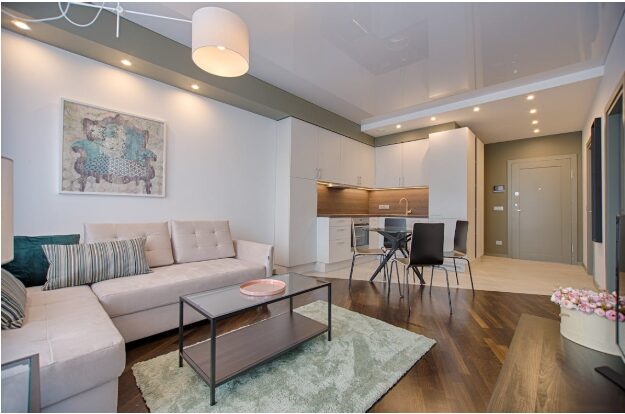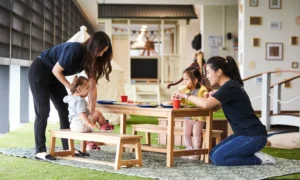Imagine walking through your dream home before a single brick is laid or testing a new kitchen layout without moving a thing. That kind of foresight used to belong exclusively to architects and high-end designers.
But the arrival of intuitive 3D design tools has changed everything. These platforms give homeowners and professionals alike the power to visualize, iterate, and perfect living spaces with an unprecedented level of detail and realism.
Photo by Vecislavas Popa on Pexels
A Revolution in Real-Time Visualization
Forget guessing what “eggshell” looks like under warm light or wondering if a sectional will overwhelm your living room. Today’s 3D design tools let you preview changes with photographic precision. This goes far beyond simple sketches or blueprints—you can simulate daylight shifting across your hardwood floors or swap out tile styles with a few clicks.
From Guesswork to Virtual Walkthroughs
Modern platforms offer fully interactive previews, letting you move through your future home as if it already exists. Want to see how a matte black faucet pairs with a concrete vanity? Or test how open shelving affects sight lines? You can do that, and more.
Flooring Visualizers and Beyond
Specialized features like a flooring visualizer allow you to test colors, grains, and materials in real-world conditions. You’ll see exactly how oak planks contrast with your wall paint or how patterned tiles affect the flow of a room.
Catching Mistakes Before They Happen
Design errors aren’t just aesthetic—they’re expensive. 3D previews flag problems early, whether it’s an awkward furniture scale or bad lighting angles. Correcting issues virtually is far less costly than fixing them mid-construction.
The Rise of User-Friendly Design
You don’t need a degree in architecture to design your home anymore. Many tools are made for people with no design background whatsoever.
With intuitive drag-and-drop interfaces, even a first-time user can move furniture, alter paint schemes, or tweak window placements with ease. It feels more like crafting a mood board than engineering a structure.
Templates That Spark Ideas
Not sure where to begin? Built-in templates inspired by trending aesthetics—Japandi, Boho, Scandinavian—offer a creative jumpstart. These pre-built environments help you explore styles you may not have considered.
Popular Template Types:
- Urban apartments with convertible furniture
- Sleek, tech-optimized home offices
- Open-concept kitchens with industrial flair
- Cozy dens with layered textures and earth tones
Augmented Reality: Your Room as a Canvas
Augmented reality (AR) brings a powerful new dimension. Aim your phone at your living room, and a virtual coffee table appears in scale. Rotate, resize, or reposition it. No imagination required—you’re looking at the future, in the present.
This tech allows you to:
- Assess whether furniture fits and flows
- Understand real-world scale instantly
- View lighting and shading in your environment
Smarter Collaboration with Pros
3D design platforms bridge communication gaps between clients and professionals. Whether you’re working with an architect, an interior designer, or a contractor, sharing detailed visual plans eliminates costly misunderstandings.
Built for Teams
Cloud-based syncing means that changes are instantly available to everyone involved. Commenting features and version control keep conversations focused and transparent. It’s project management and creative alignment rolled into one.
Beyond Design: Integrated Project Tools
Many 3D tools now include scheduling features, budget tracking, and even links to supplier catalogs. Need to know when tile arrives or which brand of paint is in the mockup? It’s all in one dashboard.
You can:
- Track deliveries in real time
- Generate shopping lists from your designs
- Export blueprints for contractor bids
- Sync calendars for install dates
Affordable Precision, Whatever Your Budget
One of the most game-changing aspects of 3D design tools is their accessibility. You no longer need a massive renovation budget to plan with precision.
Visualizing finishes side-by-side lets you see where upgrades will matter most. You might choose budget-friendly flooring so you can splurge on a statement chandelier. Every choice becomes deliberate.
When your plan is dialed in, there’s less margin for error. That means fewer returns, less rework, and more money where it counts. These tools turn guesswork into strategy.
Built for the Future
Today’s home is tomorrow’s smart ecosystem. Leading platforms now let you map smart devices into your designs—motion sensors, thermostats, even solar arrays.
Want to simulate a “wake-up routine” where lights fade in and music starts playing? Some tools can model those scenarios. This isn’t just home design. It’s lifestyle design.
Whether you’re preparing for an electric vehicle charger or thinking about solar panel positioning, 3D tools help you anticipate and adapt. Designing with future upgrades in mind means your investment lasts longer.
Sustainability Starts in the Digital Studio
Environmental awareness grows so 3D design tools are becoming essential for eco-conscious planning. These platforms allow users to evaluate the environmental impact of their choices before a single purchase is made. Want to know the carbon footprint difference between reclaimed wood and laminate flooring?
Some advanced tools can provide sustainability metrics, helping you make greener decisions without compromising style. You can also experiment with layouts that maximize natural light or improve airflow, reducing future energy consumption.
Designers can simulate insulation upgrades, renewable energy integrations, and water-efficient fixtures—all within the digital environment.
These insights aren’t just theoretical—they translate into measurable savings and smaller ecological footprints. By testing sustainable alternatives virtually, users gain confidence to commit to responsible choices in real life.
Even manufacturers are integrating with these platforms, tagging eco-certified products for easy identification. The result? A design process that aligns aesthetics with ethics.
From tiny homes to luxury builds, the digital shift enables smarter, more sustainable living from the ground up. In an age where every decision counts, 3D tools empower us to design homes that are not just beautiful, but better for the planet.
Final Thoughts
3D design tools aren’t just helpful—they’re transformational. They make it possible to visualize decisions clearly, communicate ideas efficiently, and avoid costly surprises. In a world where personalization and precision are prized, they give you both.
Whether you’re a seasoned interior designer or a first-time homeowner, this technology is your creative partner. And as AR, AI, and smart home tech continue to evolve, the line between concept and reality will only grow thinner. If you’re not using 3D tools yet, you’re designing in the past.



































